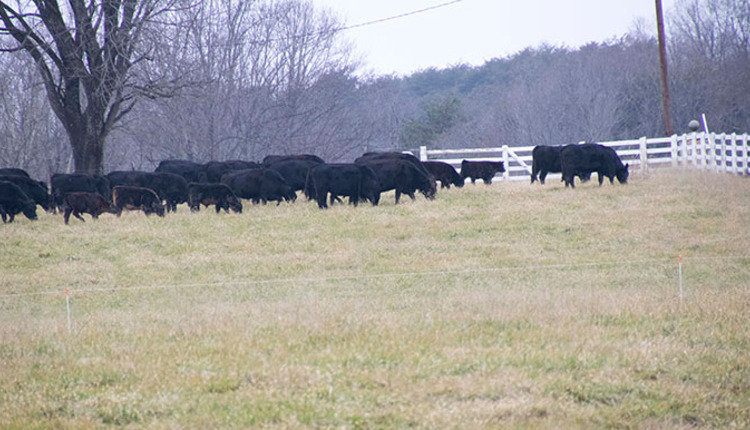Rotational grazing changed everything |
| By Hay and Forage Grower |
|
|
|
We often hear about the virtues of rotational grazing in theoretical terms based on research. However, there are livestock producers across the U.S. who can vouch for its benefits based on personal experience. One of them is Keith Tuck, an Angus producer in Moneta, Va., who has a 350-acre farm (100 rented acres) and about 100 cows. Tuck’s farm was one of the stops during a tour that preceded the American Forage and Grassland Council’s Annual Conference in Roanoke. While addressing the tour group, Tuck shared that he made the switch to rotational grazing in 2011. The 2017 Virginia Forage and Grassland Council’s “Outstanding Forage Producer of the Year” also began using stockpiled fescue as winter feed. The stockpiled fescue is strip grazed so that full forage utilization is realized. Other changes that were made included installing two wells, eight water troughs, over 16,000 feet of fence, and over 7,000 feet of pipeline. Cattle are now excluded from 100 percent of the surface water (ponds and streams) located on the farm. During the growing season, Tuck moves cattle to a new paddock every five to seven days. The fall-calving beef herd grazes to a plant height of about 4 inches, allowing for rapid regrowth. In 2016, Tuck discontinued making his own hay and sold all of his haying equipment. He now purchases whatever hay is needed to supplement pastures. Tuck is a numbers “junkie,” tracking his costs, time, and cow performance at every turn. As such, he shared some of the concrete benefits that he’s realized since switching to rotational grazing in 2011. Here are a few: · Prior to 2011, Tuck was producing and feeding 350 to 400 round bales per year. Since that time, the amount of hay fed has ranged from 13 to 200 bales per year (average was 160). · Annual hay costs have been reduced. Previously, they had been $21,000 to $24,000 per year and now range from $9,600 to $12,000 annually. · Annual fertilizer costs have dropped from almost $20,000 per year to under $5,000 per year. All fertilizer is now dedicated to stockpiling tall fescue. · Cash expenses per cow were reduced by 33 percent, or about $125 per cow. · The amount of time needed to care for and feed the cow herd has been reduced dramatically. This has allowed for more personal and family time. Tuck and his wife, Holly, have four children. |

